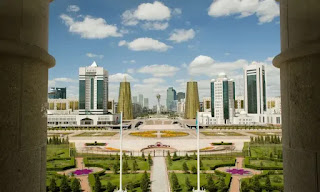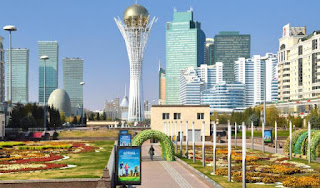The city's name was changed to Aqmola (“White Grave”) in 1992 following the independence of Kazakhstan. In 1994 the Kazakh government decided to move the national capital from Almaty to Aqmola, a process that was completed in 1997, and the city's name was renamed Astana ("Capital") the following year. Kazakh Pres.
Nursultan Nazarbayev has spent huge sums of money on the country's oil profits on the massive expansion and reconstruction of Astana. The government hired Japanese architect Kurokawa Kishō to design a wide range of new Astana routes and blue and gold buildings, including the Presidential Palace. Nazarbayev also hired British architect, Sir Norman Foster, to design a new Palace of Peace and Reconciliation, a 203-foot (62-meter) pyramid that includes, among other things, a library and an opera house. The city continued to develop rapidly during Nazarbayev's presidency, and on March 20, 2019, the day after his resignation, the city was renamed the Nur-Sultan in his honor.



